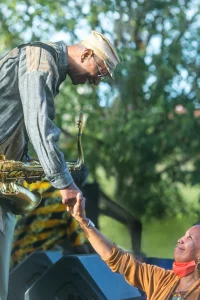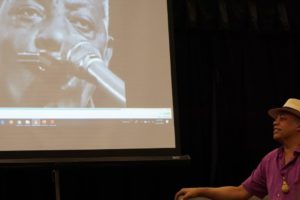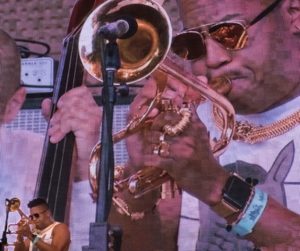If all “jazz” shares a single trait, it’s that nothing will stifle it. Adjusting to covid-19 strictures, Chicago (just for instance) in the past two months has been site of: A stellar Hyde Park Jazz Festival; Herbie Hancock’s homecoming concert at Symphony Center; audiences happily (for the most part – no reported incidents otherwise) observing […]
Digging Our Roots videos, speakers inspire engagement
Musicians and journos with insights into historic hits can offer curious audiences low-cost interactive experiences that bond most everybody present, like any successful performance.
Chi jazz fest 2016, details in photos and words
My DownBeat overview of the 38th annual Chicago Jazz Festival, comprehensive as I could make it, didn’t go into depth on any of the couple dozen performances I heard from Sept 1 through 4 in downtown Millennium Park and the Cultural Center. So here, with imagery by my photojournalist colleagues and friends Marc PoKempner and Michael Jackson (whose photo […]



